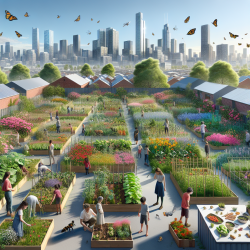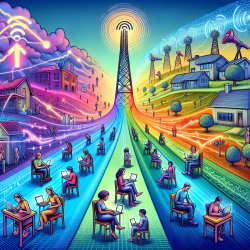Introduction
Urban landscapes are dynamic systems where socio-ecological interactions play a crucial role in shaping ecosystem services and resilience. A recent study titled "Socio-ecological connectivity differs in magnitude and direction across urban landscapes" highlights the importance of community gardens as pivotal nodes in enhancing both biophysical and social connectivity across cities like Baltimore, Chicago, and New York City.
Understanding Socio-ecological Connectivity
Community gardens are multifunctional systems that contribute to food production, social interactions, and biodiversity conservation. The study investigates how these gardens facilitate ecosystem service flows through networks across urban landscapes. The research reveals that connectivity levels and spatial arrangements differ across cities, with biophysical connectivity often surpassing social connectivity in certain areas.
Key Findings and Implications
- Biophysical vs. Social Connectivity: The study found that biophysical connectivity was generally higher than social connectivity, except in areas where gardens were clustered, promoting neighborhood-scale connectivity.
- Connectivity Hotspots and Coldspots: Patterns of connectivity hotspots and coldspots were identified, illustrating how urban form and social amenities shape ecosystem service flows among garden networks.
- City-specific Connectivity Profiles: Each city exhibited unique connectivity profiles, influenced by landscape features and garden spatial distribution.
Practical Applications for Practitioners
For practitioners in urban planning and environmental conservation, these findings offer valuable insights for enhancing urban resilience. By strategically establishing community gardens in areas identified as connectivity coldspots, practitioners can bolster socio-ecological networks and improve ecosystem service flows.
Moreover, integrating social and biophysical connectivity assessments into urban planning can inform sustainable development strategies, ensuring that urban growth supports both ecological integrity and social well-being.
Encouraging Further Research
This study underscores the need for further research into the complex interplay between social and biophysical connectivity in urban landscapes. Practitioners are encouraged to explore innovative approaches to assess and enhance connectivity, considering both ecological and social dimensions.
Conclusion
Community gardens play a vital role in enhancing urban connectivity, contributing to resilience and ecosystem service provision. By leveraging the insights from this study, practitioners can make informed decisions to create more sustainable and resilient urban environments.
To read the original research paper, please follow this link: Socio-ecological connectivity differs in magnitude and direction across urban landscapes.










